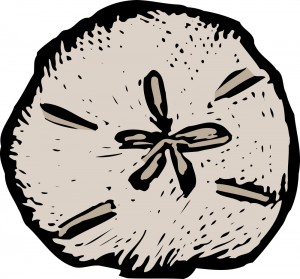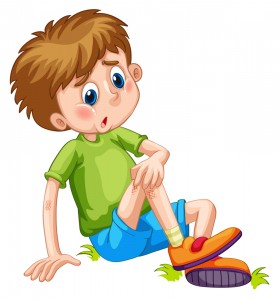Currently Browsing
Posts Tagged ‘ reading ’
4 Ways Libraries Benefit Kids
- 26 March //
- Posted in For Parents, Teaching Resources //
- Tags : library, reading
- Comments Off on 4 Ways Libraries Benefit Kids

In April, we celebrate National Library Week. It’s a week to stop and consider how important libraries are to our schools and communities. In this digital age, it may be hard to understand why libraries are still important. Kids don’t need to head to the library to find books for research – they can just look up the information online. Because of these changes, many schools and districts have begun to cut funding for school libraries. Many do not even employ a full-time librarian. Even though the use of libraries is changing, they still offer a lot of benefits to kids.
1. They Provide Equal Access to Resources
For people who have regular access to computers, smartphones, and tablets, the library may not seem like that big of a deal. They can easily access the information they need and quickly purchase and download new books to read. However, for those who don’t have access to technology or don’t want to spend money on digital books, libraries play a big role. Walk into nearly any library and look at the computers. Chances are there won’t be many empty chairs.
Every day, libraries play host to kids completing research projects or seeking homework help on the computers. They make it possible for kids who don’t have access to the Internet at home to still benefit from the resources the Internet provides. Kids don’t have to stress if a teacher gives them an assignment or schedules a test online because they know the library is there to help. Many libraries have even started to lend out tablets for use in the library so kids can get a chance to play educational games, read digital texts, and become acclimated with the latest technology.
2. They Provide a Sense of Community
In many communities, the local library is one of the most popular meeting places. Kids might meet at the library to work on a project or see friends from school when they stop by in the afternoon. Libraries also foster a sense of community by providing programs for kids and teens. They host storytimes for young kids and book clubs for teens. Sometimes libraries host special concerts or show movies for different age groups. They may even host a LEGO club or a robotics club. All of these activities give kids the chance to have fun in a safe, positive environment and help them connect with other kids in their community.
Many libraries bring their programs out into the community too. Some take bookmobiles into local communities so kids can check out books without having to go to the library. Some partner with local events or attractions for kids and design programs that show kids how reading relates to different aspects of life. For example, a librarian may visit the local zoo and read a story about snakes before the zookeeper brings out a snake for kids to see or a library may set up a booth with books about going to the doctor at a local health fair.
3. They Teach Responsibility and Accountability
Getting a library card can be a special moment for kids. It is something that belongs just to
them and it opens up a whole new world. But with that library card comes great responsibility. Kids can check out books and movies with their library cards, but those books and movies come with due dates. If a book is returned late or damaged, it results in a fine. This makes a library card a great tool for teaching responsibility and accountability.
When kids check out books, they must make sure they keep them safe and that they turn them in on time. If they end up with a lost book or a fine, they learn how to be accountable for their actions. Parents can have kids pay the fine out of their allowance or work off the fine by doing chores around the house. Doing so will help kids learn a lesson they can transfer to many other areas in life.
4. They Encourage a Lifetime of Learning
Kids cannot step into a library without learning something. If they’re playing a game on the library computer, they’re likely building their math or reading skills. If they’re reading a picture book, they’re learning new words and discovering new worlds. As they grow older, the library continues to be a place where they can learn. If they want to improve their cooking skills, they can pick up a cookbook. If they want to learn to crochet, they can find a book on crocheting or sometimes even take a class that teaches them how to crochet. When it comes time to find a job, the library will help them develop a resume and give them interview tips.
Libraries encourage people to visit new worlds, discover new points of view, and to keep building upon their knowledge. They create displays of books related to popular topic and regularly highlight librarians’ favorite reads. They host local authors, historians, and musicians. By encouraging kids to visit the library when they are young, parents and teachers will share with them a resource that they will continue to return to as they grow.
 School libraries play just an important role in the library. Are you a school media specialist or librarian looking for lesson plans and resources? Elementary Librarian provides monthly lesson plans, mini-lesson packs, and other library curriculum materials for grades K-8.
School libraries play just an important role in the library. Are you a school media specialist or librarian looking for lesson plans and resources? Elementary Librarian provides monthly lesson plans, mini-lesson packs, and other library curriculum materials for grades K-8.
Announcing the 2019 HelpTeaching.com Scholarship Finalists
- 20 June //
- Posted in Announcements //
- Tags : reading, scholarship
- Comments Off on Announcing the 2019 HelpTeaching.com Scholarship Finalists

This year, the HelpTeaching.com Scholarship received hundreds of entries. Students from all over the United States and Canada submitted stories, poems, and informational articles on topics such as understanding disabilities, making new friends, and taking care of the environment. After reviewing all of the entries, we have this year’s finalists and the winner of this year’s college scholarship. All of the finalists’ entries have been published on HelpTeaching.com and the winner will receive $1,000 to apply towards college tuition expenses.
Honorable Mention
Although these pieces didn’t quite make the cut, we felt they were still worthy of recognition.
Jessica Shenning, a freshman at Georgia State University, shared a short story about a little girl who enjoys baking with her mother and learns how to bake a special treat of her own. Read Learning to Bake >>
Jamie Lee, a student at the University of Virginia, wrote a story that reminds kids “there’s no place like home.” Read There’s No Place Like Home >> 
Lydia Colon, a senior at New Smyrna Beach High School, wrote about finding sand dollars in the ocean. Read Sand Dollars >>
Elise Carlson, a doctoral student at the University of Central Florida, focused on a slightly more taboo topic – toilets. Her piece helps kids learn how a toilet works. Read How a Toilet Works >>
Finalists
#10 The Science of Slime
If you’ve ever wondered how slime is made or the chemistry behind it, Jasmine Ma, a student at Middle College High School @ San Joaquin Delta College, has the answer. Her piece The Science of Slime helps kids learn more about the sticky substance.
Read more >>
#9 Between Sand and Sea
Dianne Mercado’s informational piece about the intertidal zone helps students learn about the different seasons found there. Dianne is a student at the University of Central Florida.
Learn more about the intertidal zone >>
#8 The Wood that Sings
Have you ever wanted to play the marimba? High school senior Molly Goins shares valuable information about the beautiful percussion instrument in her short piece.
Discover what it is>>

#7 What Happens When You Get a Scrape?
When you get a cut or a scrape, your body goes through a special process to help it heal. Amber Katharine Voightschild, a high school sophomore and homeschool student, describes the process in her informational text.
Find out how your body responds >>
#6 The Appalachian Creation
Graduate student Jenn Sisko wrote an informational article about the rocks that make up the Appalachian Mountain chain. Jenn attends Hamline University.
Discover how the mountain range formed >>
#5 Our First Thanksgiving
Lauren Collins, a recent high school graduate, and soon-to-be freshman at William Woods University wrote a piece about the first Thanksgiving from the perspective of one of the attendees, a native American girl.
Read more about the event >>
#4 Farmer Flynn and His Barnyard Companions
Farmer Flynn and his barnyard friends help kids learn more about where their food comes from and share tips for healthy eating in a short piece by Haein Kim, sophomore at Duke University.
Find out how what you eat makes your body healthier >>
#3 Uffo Goes to the North Pole 
As the polar ice cap begins to melt, the life of a polar bear becomes more difficult. Juan Restrepo, a student at Lees-McRae College, wrote a short story about a young polar bear named Uffo and his struggle to survive.
Learn more about Uffo and his mother >>
#2 Understanding the Human Heart
How much do you know about the human heart? Courtney Varela, a student at Swansboro High School, knows a lot and she put her knowledge into a creative short story for kids. After reading the story, kids will be able to know more about their own hearts too.
Discover more about the human heart >>
Winner

#1 How Do You Solve a Problem Like Maria?
Although the title sounds like a song from The Sound of Music, this short informational piece by Lucy Henneker actually shares information about a famous mathematician, Maria Gaetana Agnesi. Lucy is an incoming freshman at Wheaton College.
Read the winning piece >>
Watch for more details about the 2010 HelpTeaching.com Scholarship and start preparing your stories now! Don’t forget to check out 2017’s winner and finalists and the winning pieces from 2018 too.
The 3 Keys to the PARCC ELA Assessment
- 17 April //
- Posted in Teaching Resources //
- Tags : assessments, ELA, parcc, reading, writing
- Comments Off on The 3 Keys to the PARCC ELA Assessment

If you’re currently teaching the Common Core ELA Standards, you’re already teaching students to think critically and to look at building their reading and writing skills in new ways. The PARCC ELA assessments are aligned to the Common Core standards you’re already teaching. Those standards just come in the form of intimidating question types such as EBSRs and TECRs. While it may seem like you have to do a lot of teaching to help students figure out all of these question types, you don’t. If you want students to be successful on the PARCC ELA assessments, particularly those that deal with reading comprehension, you simply need to focus on three key areas that you’re probably already focused on anyway.
1. Text Variety
According to its developers, the goal of the PARCC is to include “texts worth reading.” These are authentic texts that come from a variety of sources, not texts written solely for the test. These texts also come in a variety for formats. Students may read an excerpt from a how-to manual, a business e-mail, or a newspaper article. They may have to interpret recipes, bus schedules, and advertisements.
Whether you’re preparing for the PARCC or simply teaching on an ordinary day, it’s time to decrease your reliance on the textbook and other traditional books and start having students read non-traditional texts. They should be reading newspapers, signs, webpages, e-mails, and historical documents. Look for texts that have charts and diagrams and texts that offer different views of the same topic too. This will help students experience the variety of passage they’ll likely find on the test – and in real life.
When it comes to more traditional texts, such as short stories and non-fiction books, students should be perusing digital versions along with the traditional print. Reading a digital version of a passage uses different skills that reading a paper-based version of a passage. Since most students will take the PARCC digitally, they need to have experience reading on a screen.
2. Evidence and Support
One of the main question types students will encounter on the PARCC ELA assessments is the EBSR. This stands for Evidence-Based Selected-Response. It sounds fancy, but all EBSR means is that students will have to answer a question and back up their answer with evidence. (See examples of EBSR questions on our practice PARCC worksheets) This is what students should be doing in the ELA classroom every day.
When students answer a question about a text, do you ask them how they arrived at that answer? That is exactly what the PARCC asks students to do. The only difference is that instead of making them search for the exact answer in the text, it gives them a series of answers to choose from. If students can find the support in the text on their own, they shouldn’t have any trouble choosing the correct answer on the PARCC.
If you’re not already encouraging students to provide support when they answer questions about a text, there are a few simple ways to help them. On a paper-based version of a text, have students regularly highlight or use sticky notes to mark the support for a particular answer. When a student answers a question in class regularly ask “why?” or “how do you know?” For students who struggle with finding support for their answers, spend some time modeling your thinking for students as you do a close reading of the text.
3. Organizing Thoughts and Information
Perhaps the most intimidating part of the PARCC is the new type of question – the dreaded TECR or Technology-Enhanced Constructed Response. While this format is new to the standardized assessment world, it’s very familiar in most ELA classrooms. A TECR is simply a glorified graphic organizer, something you likely use in your classroom every day. On TECR questions students may be asked to match a sentence from a text with a statement, compare and contrast two ideas, put events into a sequence, identify a problem and solution, or show their understanding of a cause/effect relationship.
Help Teaching has a large selection of graphic organizers for you to use with students. The key is to introduce students to many different types of graphic organizers so they become used to analyzing a text in many different ways. For example, you don’t always want to use a Venn diagram to have students compare/contrast. You could also use a T-chart or another type of organizer.
The reality is, you don’t have to spend hours worrying about how you’re going to prepare students for the PARCC ELA assessments. If you’re already teaching the Common Core standards as they’re meant to be taught, you’re helping students build the skills they’ll need to be successful on the test. Continue to provide students with a variety of texts, encourage them to support their answers, and help them organize their thinking with graphic organizers. Then build their confidence by telling them they have the skills they need to ace the test.


